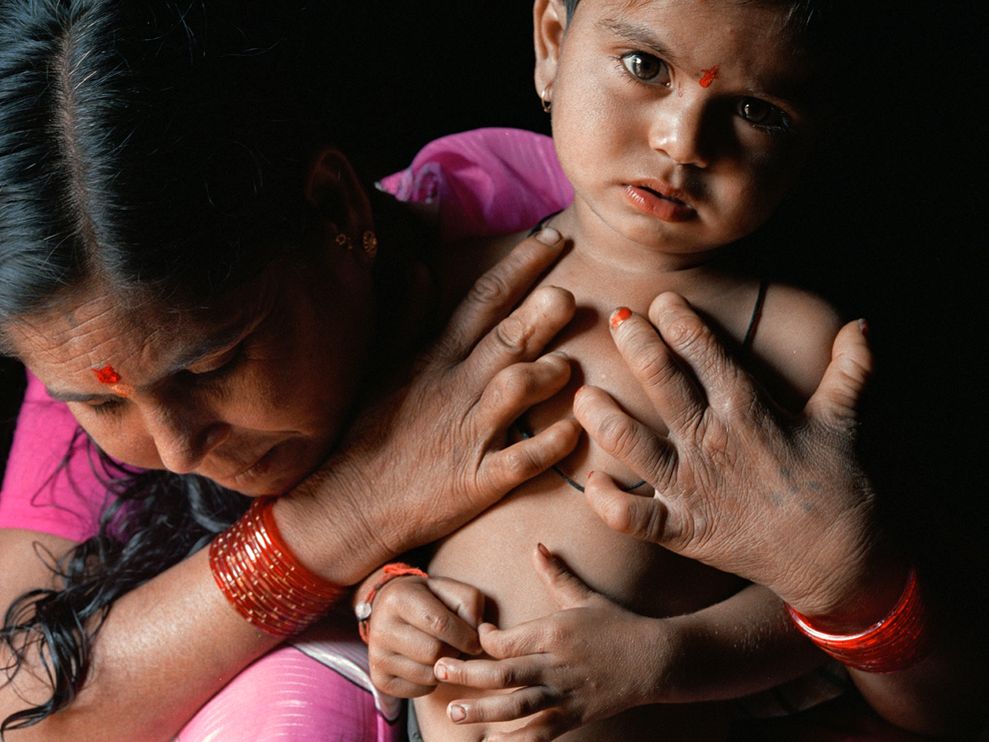
A day in the life of a doctor and his team as part of the leprosy detection drive
India is home to 60 percent of the world’s leprosy patients. But hidden cases are also very common in the subcontinent. The Union Ministry of Health and Family Welfare has initiated a nationwide drive to detect such cases. These cases remain hidden because of the fear and stigma associated with the disease.
In the first round of the drive- held between September 14 and October 4, more than two lakh health workers scouted the country, screening about 32 crore people. So far they have detected at least 20,000 hidden cases. In Maharashtra alone, the campaign has detected about 95,000 suspect cases. Of these, 2541 cases have been confirmed. Officials fear that the number may go up to 7,000.
Even though the program is ended now, an intensified campaign was held between October 17 and 22 to ensure that no one has been left out.
The doctor and his team on the field
Dr Sachin Jadhav, a medical officer at Wawoshi primary health centre in Raigad also holds the additional charge as assistant director(leprosy) in the district. Under him works a team comprising of Fatima- a health worker with 35 years of experience, Darshana Bhasma and her husband Ram, both health workers, an ‘auxillary nursing midwife’ Ashwini Mahadik and the ‘lady health visitor’ Jyoti Jagnade.
As part of the drive, the team visits many parts of the Raigad district, including the far flung tribal villages.
When Dr. Sachin gives the team a visit, Aswini and Jyoti roll out charts in Marathi and explain to Balu- a villager who was diagnosed with the disease that he can continue working as long as he takes medicine. Even though he has had the patches on his skin for long, he didn’t visit a doctor “because there was no pain.”
Dr Sachin reassures the patient that he will now get the medicines for an year. After that, he instructs G S Patil, a multi-purpose worker to advise Balu on the relevant do’s and don’ts.
Later, Darshana and Ram-who were part of the team which conducted the first round of the programme informs that of the 70 households in the village( the village in question being Dhamani), some need to be revisited. They hope to do that on this day. Aside from the cash incentive for the survey, Darshana and Ram get Rs.800 for reporting a suspected patient-someone with multiple hypo-pigmented patches on the skin. Ram examined the male members.
Dr.Sachin instructs the team that since this is the survey’s final leg they must ensure that not even a single person was left out.
The team then proceeds through the main path in Dhamani which is lined with a row of brick and mud houses, and from there through smaller lanes which lead to even smaller houses. Since most of the men work as construction workers in Panvel-which is 20 kms away and leave for work early in the morning, the village now has only women, children and the older people. (In the first phase of the program, the team began at 7:30 AM to ensure they met the men).
Houses marked ‘L’ and ‘X’
The team marks every house where the survey is completed with an ‘L’ mark. If there are members who have been left out, the house is marked with an ‘X’ sign. The village just have three houses marked ‘X’. The team’s attempt at clearing one such ‘X’ marked home didn’t turn successful since the person they had to check was not home.
In the afternoon, they proceed to Avshewadi, a hamlet some 20 minutes walk away from Dhamani. Their objective is to look at a suspected case – a 17 year old girl who lives with her mother. Both her parents were treated for leprosy but her father died last year.
During the September survey, a few patches have been detected on the girl’s hand. The girl was tested positive for multibacillary leprosy and was started on multi-drug therapy. The girl is getting better now. The team, however encourages her to stick to her medication. At around 2 PM the team leaves but they will soon be back to ensure that there are no more houses marked ‘X’.
As for Dr. Sachin Jadhav, ensuring a systematic execution of the program would be doing his bit to help rein in the deadly disease in the country.
Image credits: nationalgeographicmagazine.tumblr.com
Images may be indicative